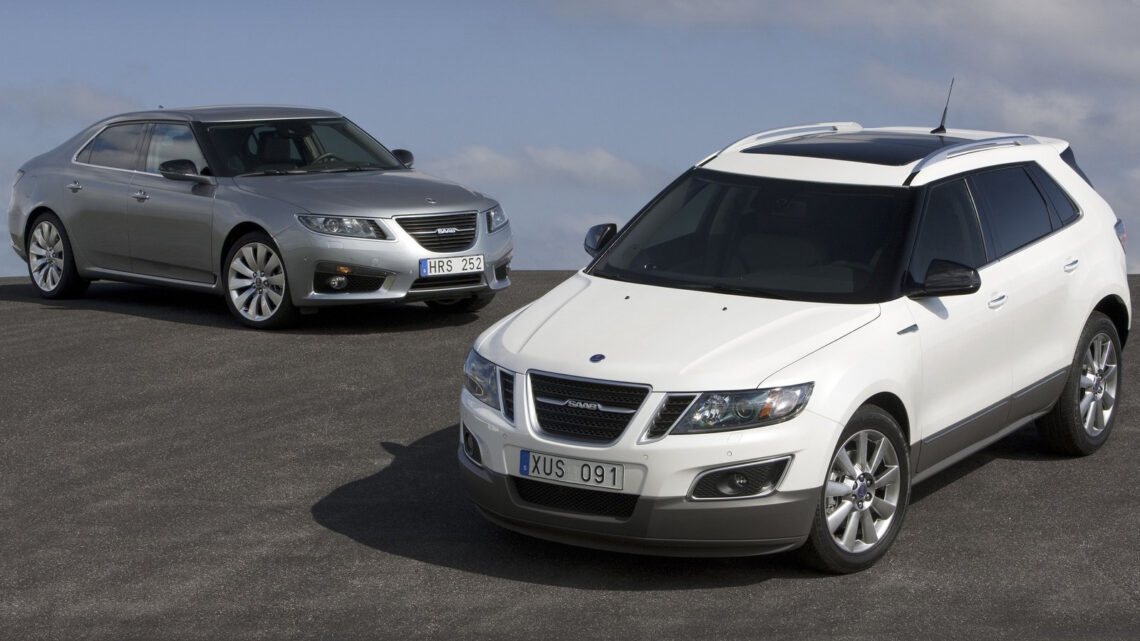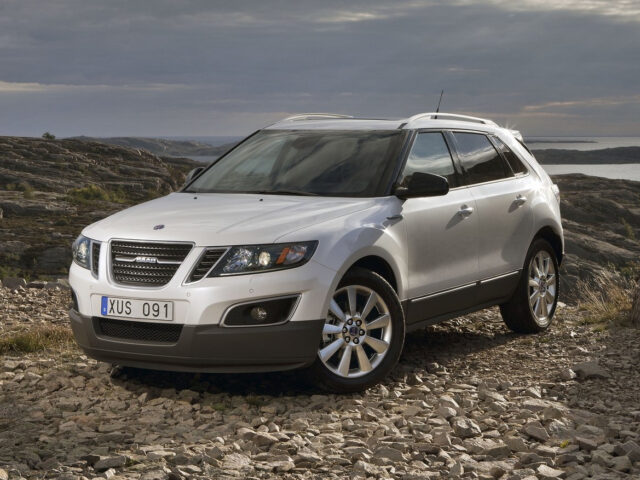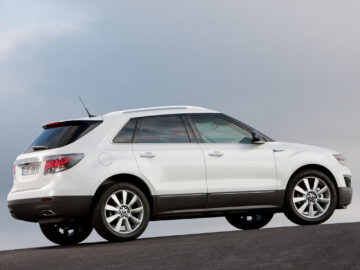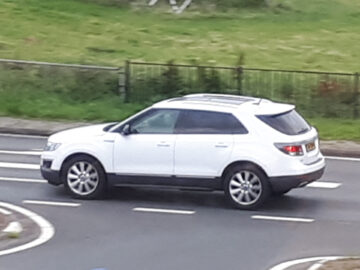Spotted: a Saab 9-4X
In the last years of its turbulent existence, Saab, under the leadership of General Motors, came up with a number of new models that were supposed to refloat the brand. In doing so, the brand focused mainly on the American market. Europe had to make do with the existing 9-3 and 9-5 for a while longer. In North America, the brand presented both the Saab 9-2X and the Saab 9-7X for model year 2005.
Both were simply rebadged versions of existing models, namely the Subaru Impreza Wagon and the Buick Rainier, Oldsmobile Bravada and related models, respectively. In fact, Saab hardly did its best to make it truly its own models. The plan did not work and both models went out of production after only a few years.
Attempt two: Saab 9-5 and Saab 9-4X
Another attempt followed for the 2010 model year, with the all-new Saab 9-5. Then again, that model was also intended for Europe. The car was once again on an existing General Motors platform (used for the Cadillac XTS, Chevrolet Impala and the Opel Insignia, among others), but this time it was given a design that was truly its own. In terms of perception, it was a true Saab again, and the model was enthusiastically received.
Less well known is that Saab came out with another model for the 2011 model year: the Saab 9-4X. That model was primarily intended for the US, but was also offered in Europe. The 9-4X was a relatively compact SUV that shared its engineering base with the Cadillac SRX. In terms of design, like the 9-5, the 9-4X was a true Saab model, although brand purists still found it difficult that Saab was making an SUV. However, the 9-4X had nothing to do with Sweden; in fact, it is the only Saab produced in Mexico.

Specifications Saab 9-4X
The Saab 9-4X was available with two V6 gasoline engines: a 3.0-liter rated at 198 kW (269 hp) and 302 Nm, and a 2.8-liter turbocharged engine that delivered 224 kW (304 hp) and 400 Nm despite its smaller displacement. The “base model” accelerated to 100 mph in 9.0 seconds and had a top speed of 210 mph. The more powerful turbocharged engine took the Saab to 100 mph in 8.3 seconds and continued to 230 mph.
The transmission was always a six-speed automatic, with drive to the front wheels or to all four depending on the version. There were plans to offer the Saab 9-4X in Europe also with a diesel engine, but it never got that far.



Production numbers Saab 9-4X
Like the 9-5, the Saab 9-4X was well-received by the American press, but we now know that the model offensive was to no avail. It was over and out for Saab at the end of 2011, making 2012 model year the last for both the Saab 9-5 and the 9-4X.
The Saab 9-5 eventually produced 11,280 units. The Saab 9-4X, thus shorter in production, came to 673 units. Depending on the source you consult, it totals 803 to 814 if you include the pre-series (test) copies.



The spotted specimen
So the chances of encountering a Saab 9-4X in traffic are very small, especially here in Europe. Yet one drove past our editorial office in Bodegraven just like that. The spot photos are of a somewhat lower quality than you are used to from us, but we still wanted to feature this special piece of Saab history. The spotted example appears to be a 2011 Saab 9-4X, which has been in the Netherlands since 2016.
If we look in the RDW license plate register, we notice that there are still as many as 28 Saab 9-4X’ on Dutch license plates. All of them were imported and all but one are from 2011. That one was just registered in 2012. Except for one other specimen described as “brown,” all Dutch 9-4X’ are white, black or gray, in a fairly even distribution.




